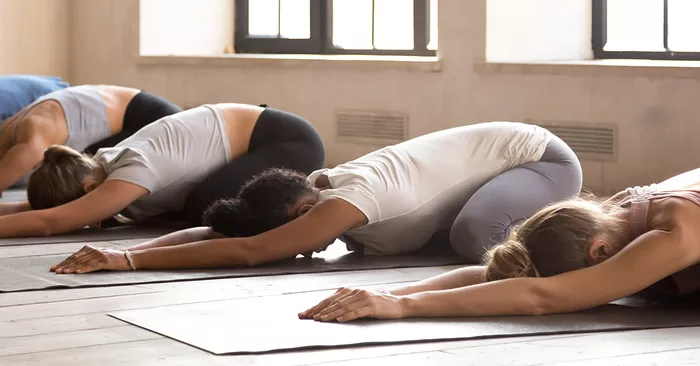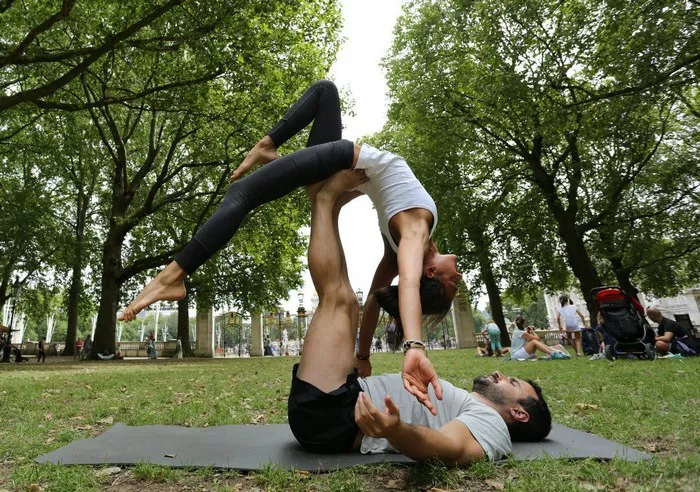Yoga, an ancient practice that combines physical postures, breath control, and meditation, is renowned for its numerous physical and mental health benefits. However, like any physical activity, yoga can sometimes lead to discomfort or injury if not practiced correctly. One common issue among yoga practitioners is wrist pain. Understanding the causes, preventive measures, and relief techniques for wrist pain is essential for a safe and enjoyable yoga practice.
Causes of Wrist Pain in Yoga
1. Overuse and Repetition
Wrist pain often results from the overuse of wrist joints during yoga. Many yoga poses, such as Plank, Downward-Facing Dog, and Crow, require weight-bearing on the hands and wrists. Repeatedly performing these poses without adequate rest or variation can strain the wrists, leading to pain.
2. Poor Alignment
Incorrect alignment of the wrists, hands, and arms can exacerbate wrist pain. For example, in poses like Downward-Facing Dog, if the wrists are not aligned properly with the shoulders, it can cause uneven distribution of weight and increased pressure on the wrists.
3. Weakness in Supporting Muscles
Weakness in the muscles that support the wrists, such as the forearm and shoulder muscles, can contribute to wrist pain. When these muscles are not strong enough to bear the weight or stabilize the joints, the wrists may take on more stress than they can handle.
4. Previous Injuries
Individuals with a history of wrist injuries, such as sprains or fractures, may be more susceptible to experiencing wrist pain during yoga. Scar tissue and reduced mobility from previous injuries can make the wrists more vulnerable.
5. Flexibility Issues
Limited flexibility in the wrists can also lead to discomfort. Some yoga poses require significant wrist extension or flexion, and if the wrists are not sufficiently flexible, it can cause strain and pain.
Preventing Wrist Pain in Yoga
1. Proper Warm-Up
Warming up before yoga is crucial for preventing injuries, including wrist pain. A good warm-up increases blood flow to the muscles and joints, making them more pliable and less prone to strain. Focus on warming up the wrists, hands, and forearms with gentle stretches and movements.
2. Strengthening Exercises
Strengthening the muscles around the wrists can provide better support and reduce the risk of pain. Incorporate exercises that target the forearms, shoulders, and core into your routine. Examples include wrist curls, reverse wrist curls, and shoulder strengthening exercises like push-ups and shoulder presses.
3. Gradual Progression
Avoid jumping into advanced poses without proper preparation. Gradually progress in your yoga practice, allowing your wrists and supporting muscles to adapt to increased demands. If you are new to yoga, start with beginner-friendly poses and slowly work your way up.
4. Focus on Alignment
Proper alignment is key to preventing wrist pain. Pay attention to the placement of your hands and wrists in weight-bearing poses. For instance, in Plank pose, ensure that your wrists are directly under your shoulders, fingers spread wide, and the weight evenly distributed across your hands.
5. Use Props
Yoga props, such as blocks, straps, and wedges, can be incredibly helpful in preventing wrist pain. Props can modify poses to reduce strain on the wrists. For example, placing a block under your hands in Downward-Facing Dog can alleviate some of the pressure on your wrists.
6. Wrist-Friendly Variations
Explore wrist-friendly variations of common yoga poses. For example, instead of a traditional Plank pose, you can try a Forearm Plank, which places less strain on the wrists. Similarly, in poses like Downward-Facing Dog, you can perform Dolphin pose, which uses the forearms for support.
7. Listen to Your Body
One of the most important aspects of yoga is tuning in to your body. If you experience wrist pain during a pose, do not push through it. Modify the pose, take a break, or seek guidance from a knowledgeable yoga instructor.
Relieving Wrist Pain in Yoga
1. Rest and Recovery
If you are experiencing wrist pain, the first step is to give your wrists a break. Avoid weight-bearing poses that exacerbate the pain and allow your wrists to rest and recover. Ice packs and anti-inflammatory medications can also help reduce pain and swelling.
See Also: 5 Restorative Yoga Poses for Heart Opening
2. Gentle Stretching
Gentle stretching can help alleviate wrist pain by improving flexibility and relieving tension. Perform wrist stretches regularly, focusing on both flexion and extension. Stretching the forearms and shoulders can also contribute to overall wrist health.
3. Massage Therapy
Massage therapy can be beneficial for relieving wrist pain. A professional massage therapist can target specific areas of tension and promote relaxation. Self-massage techniques, such as using a tennis ball to roll out the forearms, can also be effective.
4. Yoga for Wrist Pain Relief
Incorporate yoga poses that specifically target wrist pain relief into your practice. Poses like Wrist Rotations, Eagle Arms, and Hand-To-Wrist Stretches can help release tension and improve mobility. Additionally, restorative yoga poses, such as Child’s Pose and Savasana, can provide overall relaxation and recovery.
5. Use of Supportive Gear
Consider using supportive gear, such as wrist braces or compression sleeves, during your yoga practice. These can provide additional stability and reduce strain on the wrists. However, consult with a healthcare professional before using any supportive gear to ensure it is appropriate for your condition.
6. Gradual Return to Practice
When returning to your yoga practice after a period of rest, do so gradually. Start with gentle, non-weight-bearing poses and slowly reintroduce weight-bearing poses as your wrists become stronger and more resilient. Pay close attention to any signs of discomfort and adjust your practice accordingly.
Long-Term Wrist Health in Yoga
1. Consistent Strengthening and Stretching
Maintaining long-term wrist health in yoga requires consistent effort. Continue to incorporate strengthening and stretching exercises into your routine to keep the muscles around your wrists strong and flexible. Consistency is key to preventing future wrist pain.
2. Educate Yourself
Stay informed about proper alignment, modifications, and wrist-friendly variations of yoga poses. Attend workshops or seek guidance from experienced yoga instructors who can provide valuable insights and corrections to your practice.
3. Regular Check-Ins with Healthcare Professionals
If you have a history of wrist issues or experience persistent pain, regular check-ins with healthcare professionals, such as physical therapists or orthopedic specialists, can be beneficial. They can provide personalized advice and treatment plans to support your wrist health.
4. Practice Mindfulness
Mindfulness is an integral part of yoga. Practicing mindfulness during your yoga sessions can help you stay attuned to your body’s signals and prevent overexertion. Pay attention to how your wrists feel in different poses and make adjustments as needed.
5. Balance Your Practice
A well-rounded yoga practice includes a balance of strength, flexibility, and relaxation. Avoid focusing solely on weight-bearing poses and ensure that your practice includes a variety of poses that target different muscle groups and aspects of fitness.
Conclusion
Wrist pain in yoga is a common issue that can hinder your practice and overall well-being. By understanding the causes, taking preventive measures, and incorporating relief techniques, you can enjoy a pain-free yoga experience. Remember to warm up properly, focus on alignment, and gradually progress in your practice. If you experience wrist pain, allow time for rest and recovery, and seek professional guidance if needed. With consistent effort and mindfulness, you can maintain long-term wrist health and continue to reap the benefits of yoga.
Related topics:























